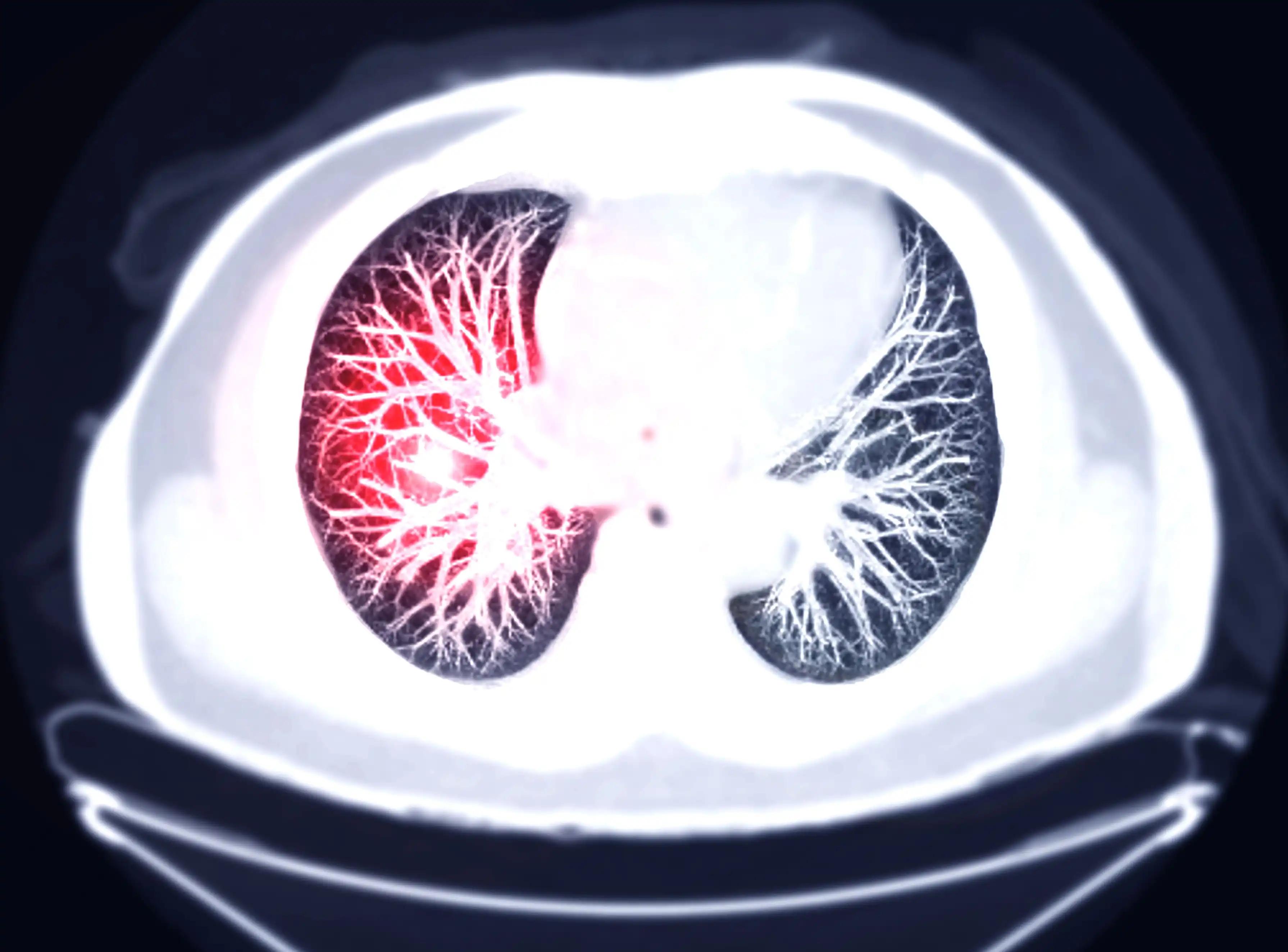KEY TAKEAWAYS
- COAST phase II (NCT03822351) investigated the efficacy of durvalumab, oleclumab, or monalizumab in NSCLC patients who haven’t progressed after cCRT.
- The study aimed to assess the efficacy of combination therapies with durvalumab.
- The study showed that ORR and PFS were markedly improved with combination therapies, with no novel safety signals.
Patients with non-small-cell lung cancer, stage III, who have not progressed during or after concurrent chemoradiotherapy (cCRT) benefit greatly from treatment with durvalumab, which dramatically extends their overall survival. The COAST phase II investigation looks at the efficacy of durvalumab alone or in combination with the anti-CD73 monoclonal antibody oleclumab or the anti-NKG2A monoclonal antibody monalizumab.
Stage III non-small cell lung cancer patients without disease progression following cCRT were randomly assigned 1:1:1 to receive durvalumab alone or in combination with oleclumab or monalizumab for up to 12 months, stratified by histology. The investigator-confirmed objective response rate was the major outcome measure (ORR; RECIST v1.1).
This randomized study occurred between January 2019 and July 2020 and involved 189 patients. Median follow-up was 11.5 months as of the date of this intermediate study (May 17, 2021). (range, 0.4-23.4 months; all patients). Compared todurvalumab + oleclumab (30.0%; 95% CI, 18.8 to 43.2), the confirmed ORR was significantly lesser with durvalumab alone (17.9%; 95% CI, 9.6 to 29.2) and durvalumab + monalizumab (35.5%; 95% CI, 23.7 to 48.7). 12-month progression-free survival (PFS) rates were better with both combinations than with durvalumab alone (PFS plus oleclumab: 62.6% [95% CI, 48.1 to 74.2] and PFS plus monalizumab: 72.7% [95% CI, 58.8 to 82.6] v PFS with durvalumab alone: 33.9% [95% CI, 21.2 to 47.1]). Durvalumab + oleclumab was associated with a 40.7% incidence of treatment-emergent adverse events of grade 3. In comparison, durvalumab with monalizumab was associated with a 27.9% incidence, and durvalumab alone was associated with a 39.4% incidence.
When compared to durvalumab alone, both combinations improved ORR and PFS. No novel or substantial safety signals were detected with either arm combination. The results of this study provide credence to the idea that they merit a phase III trial.
Source: https://pubmed.ncbi.nlm.nih.gov/35452273/
Clinical trial: https://clinicaltrials.gov/ct2/show/NCT03822351
Herbst, R. S., Majem, M., Barlesi, F., Carcereny, E., Chu, Q., Monnet, I., Sanchez-Hernandez, A., Dakhil, S., Camidge, D. R., Winzer, L., Soo-Hoo, Y., Cooper, Z. A., Kumar, R., Bothos, J., Aggarwal, C., & Martinez-Marti, A. (2022). COAST: An Open-Label, Phase II, Multidrug Platform Study of Durvalumab Alone or in Combination With Oleclumab or Monalizumab in Patients With Unresectable, Stage III Non-Small-Cell Lung Cancer. Journal of clinical oncology : official journal of the American Society of Clinical Oncology, 40(29), 3383–3393. https://doi.org/10.1200/JCO.22.00227



